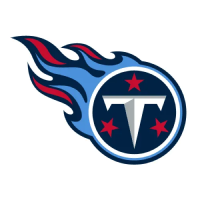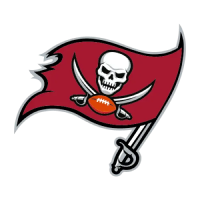The 2020 safety class had an embarrassment of riches: Antoine Winfield Jr., Jeremy Chinn, Kyle Dugger, and Xavier McKinney. The 2021 safety class? Not so much.
With only one safety expected for a first-round draft capital in Trevon Moehrig, out of TCU, the Day 2 board of safeties could go a ton of different ways. Players like Jevon Holland (Oregon) and Hamsah Nasirildeen (Florida State) have long had hype, while Richie Grant (UCF) and Divine Deablo (Virginia Tech) are late risers. I’d like to add another name to the mix: Talanoa Hufanga (USC).
A freshman starter and three-year college player, Hufanga declared after being named the Pac-12 Defensive Player of the Year, serving as the cornerstone of USC’s defense in 2020. He led the Trojans in tackles (62), forced fumbles (two), and interceptions (four). It was his best season as a Trojan.
But it probably wasn’t even his best season outright.
The most important part of Hufanga’s evaluation may be his injury history, and it helps us understand his arc as a player. Hufanga broke his collarbone during his rookie season in 2018 and then broke it again a few months later during a 2019 spring practice. He had surgery on his right collarbone, but then dislocated his shoulder later in the 2019 season, missed further games, and had another surgery.
Hufanga has always been a physical player for the Trojans and has modeled his game after Troy Polamalu, another Polynesian Trojan safety. That inspiration is evident in the way he plays: Hufanga has 6.5 sacks and 16.5 tackles for loss across only 24 games played in college—substantially the best line of scrimmage production among all safeties in the class. Like Polamalu, Hufanga plays at times with a recklessly high velocity that creates thundering hits, immediately ends plays in the backfield, and has a nose for generating turnovers. But Hufanga was more tepid and uncertain coming into contact in 2020 than he was in 2019, and his penchant for missed tackles is difficult to ignore when you realize just how much damage he’s sustained in his upper body.
Unfortunately for Hufanga, and the Trojans, deploying him as their single-high safety left them exposed when they needed him as the last line of defense. But a 6-foot, 210-pound player shouldn’t be playing the roof unless he has top-flight speed, and that isn’t something that Hufanga brings. At his Pro Day, Hufanga ran a 4.63-second 40-yard dash at a diminished weight of 199 pounds.
So, Hufanga isn’t a deep middle player, and he has some injury concerns. But among box safeties in this class? Hufanga is the cream of the crop.
Hufanga was used as a utility knife on the USC defense over the last two years, taking the majority of his snaps in the box (430 snaps) but also delivering 86 snaps on the defensive line and 129 flexed out in slot coverage. Against heavy personnel teams like Notre Dame, BYU, and Utah, Hufanga lived as a subpackage linebacker, filling against the run and handling future NFL players in Tommy Tremble and Cole Kmet in man coverage. Against speed and space-based teams in the Pac-12, like Oregon and UCLA, Hufanga spent more time in traditional safety alignments.
Hufanga is an impressively instinctive and physical player who matters against the run. Rarely fooled by play-action or misdirection, Hufanga was effective at turning runs back into help or knifing through blockers to disrupt in the backfield. A great knack for blitzing gives Hufanga batted passes at the line of scrimmage and quick pressures to work the quarterback into the teeth of the USC pass rush. While he doesn’t shine as a straight-line player, Hufanga was explosive and agile in short areas and tested accordingly, with strong jumps and agilities.
Hybrid safety/linebackers were all the rage a few years ago, but as NFL teams have become more interested in combo and interchangeable safeties, we’ve moved away from that supersized strong safety mold. Just as Keanu Neal and Karl Joseph went in the first round to fill the Kam Chancellor archetype, now they’re signing one-year deals in free agency.
Hufanga is a callback to that mold of safety. He can blitz, stack against the run, impose a physical presence in short zones, tackle in tight quarters, blow up screens, and play in man coverage over tight ends. The meta of the league may be looking in a different direction, but players with Hufanga’s talent don’t fail out of the league. For those defenses still running Seattle Cover 3 approaches in need of a traditional box safety, Hufanga represents a steal opportunity after Round 2 of the draft—especially with the discount of his injury concerns considered.
When Hufanga was on the field for the Trojans, he was a high-impact player; when he’s on the field in the NFL, I expect him to be so again. He isn’t the next Polamalu, but in a thin safety class, he’s the prototypical box safety with an immediate and enticing Year 1 projection.
Filed In
Related Articles
NFL Draft
Arik Gilbert Doesn’t Need Big Workload To Be A Top NFL Draft Pick
- Aug 22, 2022
NFL Draft
2023 NFL Mock Draft: Marino 1.0
- Aug 22, 2022
Written By


































